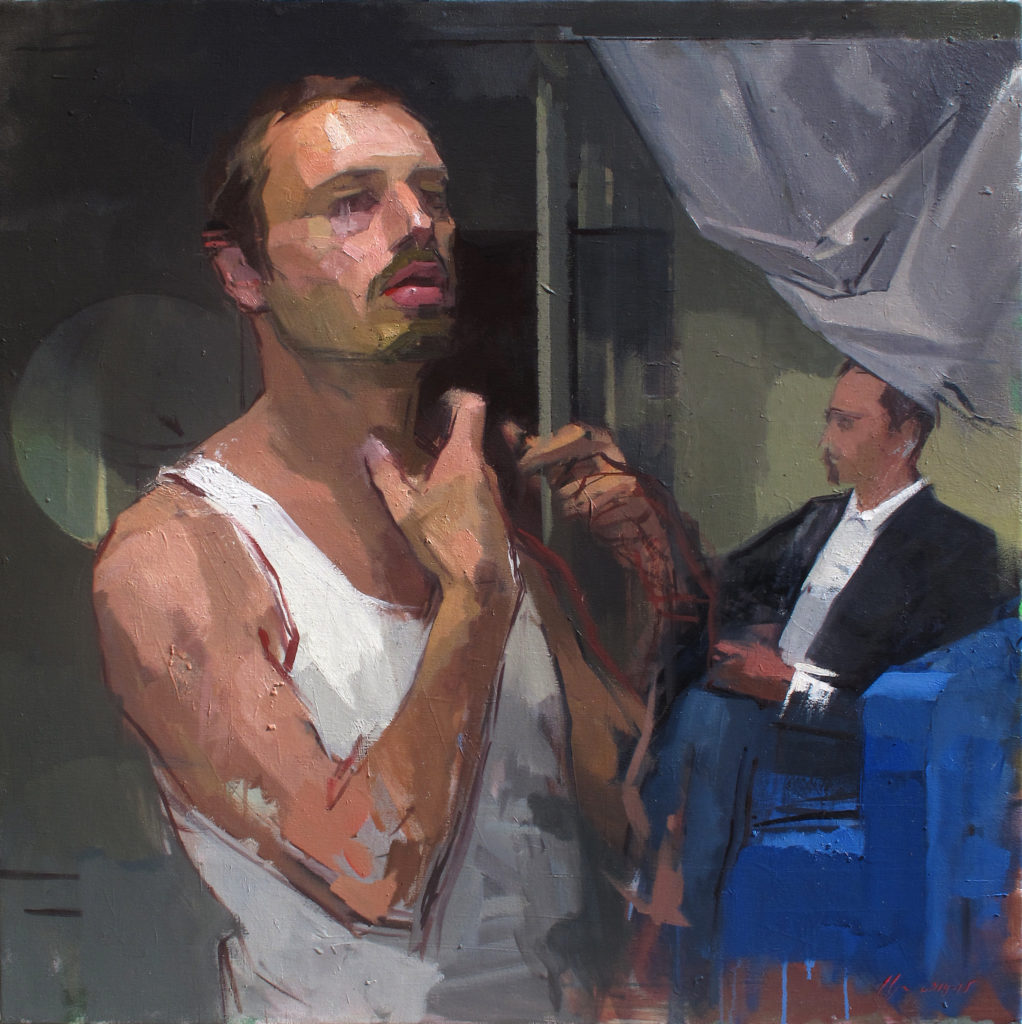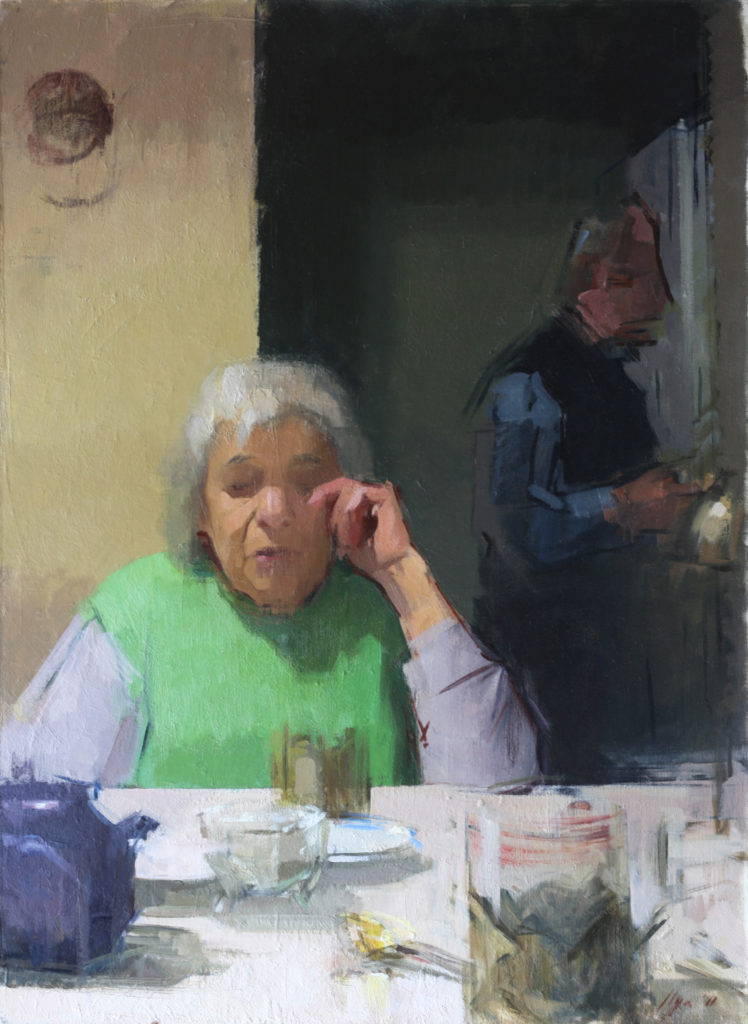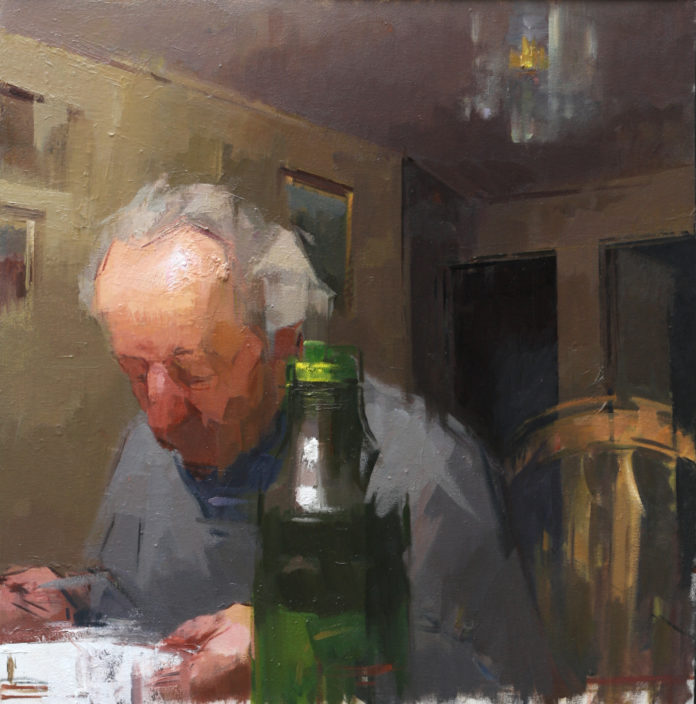Contemporary Oil Paintings > “Ilya Gefter’s suite of misty, achingly delicate paintings are a quiet respite,” said R.M. Vaughan of The Globe and Mail*. “Gefter’s crafty focus pulling/focus releasing causes the viewer to first seek out the solid, fully materialized objects being studied, and then to drift toward the liminal spaces, the backgrounds and sunsets, all underpainted veils of muted colour. Absence and presence, negative and positive space, are neatly, even obsessively, balanced, but Gefter’s works are not overly painterly or forced. Sleight of hand rarely feels so honest.”
Ilya was kind enough to respond to questions we had about his work, and about the ways a viewer may gain insight into an artist by looking at his or her work.

In what ways and to what extent do your temperament and view of the world reveal themselves in your work?
I believe that these things are beyond conscious control. Whether I want it or not, my temperament manifests itself in every brushstroke. In what ways the work mirrors my emotional make-up and my views, I cannot tell, as I am too engaged in the process. I would assume that the paintings inevitably reflect my passing inner states that change from month to month, and from year to year. And perhaps, somehow, also reflect a deeper core that does not change a lot over the years.

Was there a point in your own life—or perhaps a period in your life—where you looked at a work on the easel, and had an Ah-ha moment, recognizing that work as a unique expression of your voice on canvas?
As a youngster I thought about discovering some style or a personal voice. I do not know whether I ever found it, but I do know that at a certain point I stopped searching for one. Instead of looking for a personal voice, I wish to constantly clarify to myself what my values are. The clearer my vision is of quality and seriousness in art, the more streamlined my efforts are.
I ask myself what I value in art . . . what I value as a human being . . . and what makes a painting meaningful to me. If I do have a personal voice, it is just a byproduct of my reflection on these issues that are, in fact, broad and impersonal: What makes art meaningful? What makes a painting work well visually? What makes a painting significant or profound?
In other words, I am more preoccupied with the content of the pictorial conversations and less concerned with the voice. The content, in turn, determines the particular qualities of the voice, which remain secondary.

Is it fair to say that every piece an artist paints is in a way an amalgam not just of the scene in front of them and the paints on their palette, but an entire life experience, synthesized to a greater or lesser extent on the canvas? If this is true, do you have a sense of obligation—or anxiety—about speaking your life experience clearly through your oil paintings?
I do not believe there is such a thing as “obligation.” There are urges, desires and decisions. But fulfilling certain desires takes a tremendous amount of courage. It definitely takes some courage to fulfill the urge of expressing personal experiences on a canvas. I feel like I constantly have to dismantle limitations and safety nets that we build for ourselves through education and training.
Like all of us, I’ve invested my efforts in figuring out the craft. Artifice is necessary to unveil the human experience—but it may also conceal it, when it becomes self-referential. It does take a fair bit of honesty and courage to have the craft speak of personal experience.
Your oil paintings seemed to move progressively into the evening and night hours and grew in intensity and interest as it did. What are some of the challenges and advantages of low-light settings?
Since my last year in college, I was interested in the issue of light. Light is both a revealing and a concealing principle. Sometimes the light mainly reveals, like crisp, sunny weather does at mid-day. Evening light, on the other hand, conceals things. Being less interested in the landscape of facts, and more concerned with atmosphere, the qualities of concealment are essential to me. There’s more mystery in evening and twilight hours.

How heavily do you rely on photography to guide your painting?
The camera has multiple functions for me. First and foremost the lens of the camera is a seeing aid—a tool that unifies the visual flux into a manageable scale and a rectangular format. The camera is also an efficient tool to select motifs. When I started using the camera extensively about nine years ago, I took multiple photos before starting to paint, but in the end, the work was done entirely from observation without ever looking at the snapshots.
As the work was becoming more layered, more complex, or simply larger, it necessitated a certain distance from the motif. Gradually, I started using the photographs beyond the initial stages of selection. Now, the photos stay with me throughout much of the process. Direct experience of the motif, however, remains indispensable. And a painting is always measured and weighed against itself, not in relation to the photography.
In what ways is your current work a logical next step in your development or vision?
That I may only know when my current work becomes my past work. Seeing such things requires some distance.
Learn more about Ilya Gefter and see more oil paintings at www.ilyagefter.com.
Facebook | Instagram
> Visit EricRhoads.com to learn about more opportunities for artists and art collectors, including retreats, international art trips, art conventions, and more.
> Sign up to receive Fine Art Today, our free weekly e-newsletter featuring a variety of oil paintings, pastels, watercolors, and more
> Subscribe to Fine Art Connoisseur magazine, so you never miss an issue








